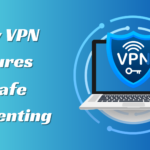Implementing Workplace Safety Training: Best Practices and Common Challenges
- 1 Implementing Workplace Safety Training
- 1.1 Safety Training Challenges And Solutions
- 1.2 Lack of Employee Engagement:
- 1.3 Language Barriers:
- 1.4 Insufficient Training Resources:
- 1.5 Inadequate Time and Scheduling:
- 1.6 Outdated Training Methods:
- 1.7 Lack of Evaluation and Feedback:
- 2 Best Practices To Implement Workplace Safety Training
Nobody is a fan of safety training courses, not because they believe it’s ineffective but because registering for months-long classes and taking the time out to go through the jargon and tricky regulations is something that bothers a lot, especially when you have tough job schedules and a load of work pending.
In such a situation, employees prefer to avoid training and figure out situations on their own, which lead to putting their wellness and those of others at stake. Implementing safety training programs can be tricky when nobody shows the willingness to follow and be active throughout the course.
Implementing Workplace Safety Training
In this blog we will discuss the best practices for safety training implementation and throw light on some challenges that employees and companies encounter.
Safety Training Challenges And Solutions
In order to integrate safety training with organizational goals you need to understand the common challenges faced. Here’s a list of some challenges in implementing safety training.
Lack of Employee Engagement:
According to a study conducted by the Association for Talent Development, only 34% of employees feel engaged during safety training programs. The tricky content demotivates and discourage employees to opt for training.
Language Barriers:
The Occupational Safety and Health Administration (OSHA) estimates that there are approximately 25 million workers in the US who have limited English proficiency, making it challenging to deliver safety training in a language they understand. The course should be available in multiple languages like the OSHA 30 Construction, which is available in several languages.
Insufficient Training Resources:
A study conducted by the National Safety Council revealed that 58% of organizations do not have sufficient resources to provide effective safety training to their employees. If you check the OSHA 10 Hour Training you will find all updated content with interactive lessons.
Inadequate Time and Scheduling:
To ensure a smooth training program administration you need to make sure you plan things according to your employees work schedules. A survey conducted by the National Safety Council found that 35% of employees feel that they don’t have enough time for safety training, while 27% of employers feel that scheduling conflicts hinder their ability to deliver training.
Outdated Training Methods:
According to a study by EHS Today, 75% of organizations still use traditional classroom training as their primary method of delivering safety training, which can be less effective and engaging than newer methods such as online training.
Lack of Evaluation and Feedback:
According to a survey conducted by the National Safety Council, 50% of organizations do not evaluate the effectiveness of their safety training programs, which can make it difficult to identify areas for improvement.
Best Practices To Implement Workplace Safety Training
To overcome the challenges you need to address them individually with easy to implement and effective solutions. Occupational Safety and Health Administration is a federal agency that has been involved in training and educating employees. They have introduced such practices that have made it easier for employees to enroll and complete their training. So, let’s find out the best practices and solutions that can make implementation easy. Here are some, read on:
Interactive Group Discussions
To make sure that employees stay involved there is a need to go for making the training sessions interactive and engaging by including group discussions, case studies, and simulations. Use multimedia content such as videos, animations, and gamification to make the training more interesting and effective. Involve employees in the training design process and incorporate their feedback and suggestions
Effective Communication In Safety Training
To overcome the language barrier, provide safety training in multiple languages that are commonly spoken by employees. Use visual aids and graphics to supplement the training content and make it easier to understand. Provide language training to non-English speaking employees to help them communicate better with their colleagues and supervisors
Managing Safety Training Resources
It’s important to invest in technology-enabled training solutions such as e-learning and virtual reality to make training more scalable and cost-effective. Utilize external training providers who can offer specialized training programs and expertise. Prioritize safety training by allocating adequate budget and resources to it. Therefore, a VR training module for the healthcare industry must be integrated into the existing system, with the help of a premier VR & AR service provider like “Arborxr” that specifically caters to different industry verticals and service domains, critical healthcare being one of them.
Inadequate Time and Scheduling
To help employees better manage their work with the training make the sessions shorter and more focused to accommodate employees’ busy schedules. Offer flexible training options such as online training modules and on-demand learning resources. Schedule training sessions during work hours to minimize disruption to employees’ personal time
Continuous Improvement In Safety Training
Embrace new training technologies such as e-learning, virtual reality, and mobile learning to make training more engaging and effective. Incorporate multimedia content such as videos, animations, and gamification to enhance the learning experience. Use a variety of training methods such as on-the-job training, mentoring, and coaching to reinforce the learning and ensure its application in the workplace
Safety Training Program Evaluation
It’s important to share feedback and have a criteria to evaluate the understanding of employees. Establish clear learning objectives and performance metrics to measure the effectiveness of the training program. Collect feedback from employees about the training content and delivery to identify areas for improvement. Conduct regular assessments and evaluations to ensure the training is having the desired impact on workplace safety.
By implementing these solutions, organizations can overcome the common challenges associated with workplace safety training and create a safer and healthier work environment for their employees.
Wrap Up
Implementing effective workplace safety training programs can be challenging for organizations due to factors such as lack of employee engagement, language barriers, insufficient training resources, inadequate time and scheduling, outdated training methods, and lack of evaluation and feedback.
To overcome these challenges, organizations can adopt various solutions such as making training sessions interactive, providing training in multiple languages, investing in technology-enabled training solutions, offering flexible training options, embracing new training technologies, and establishing clear learning objectives and performance metrics. By prioritizing workplace safety training and implementing these solutions, organizations can create a safer and healthier work environment for their employees.

















